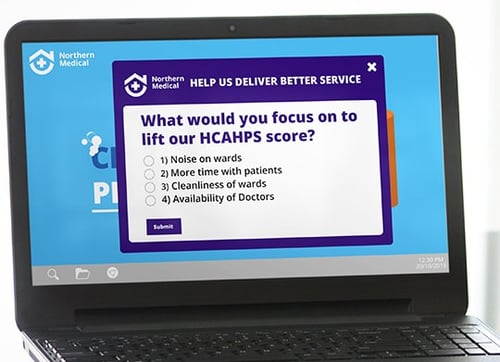
Does your workplace have a culture crisis? Is a toxic culture holding your organization back – and compromising patient care?
The importance of workplace culture can’t be overstated. The facts prove it – positive workplace culture results in more productive, better performing businesses. It’s especially true in healthcare.
The link between culture and outcomes has been demonstrated consistently across multiple studies, settings and countries. Staff are engaged and motivated to deliver the exceptional patient care that drives high HCAHPS scores.
In a recent hospital study, those facilities which demonstrated positive shifts in culture achieved greater creativity, enhanced problem-solving and better change management.
Leadership communication plays a critical role whether you’re a senior manager or the CEO. They establish a standard to follow and enable a framework of support. Here’s how your leadership communication must step up to the challenge.
1. Build a strong, supportive leadership
As a leader, you carry a lot on your shoulders. The organization’s strategic vision and overall direction is your responsibility. But culture also plays a part – like it or not! A third of healthcare workers believe the CEO is most accountable for culture change.
Staff expect leaders to have a strong presence. They must be supportive, approachable and visible – whether in person or digitally. Leaders uncomfortable with dealing directly with staff should be coached accordingly.
Regular face-to-face communication in healthcare may be impossible with multiple locations or broad geographic reach. This can be addressed through use of digital channels like eNewsletters, leadership blogs or video updates. These provide a personal connection without the big travel bills.
2. Encourage transparency
Transparency builds trust – one of the most important influences on workplace culture. It depends upon leaders not withholding information from staff which affects them. Closed door environments are poison for culture.
Greater senior management engagement drives positive shifts in hospital culture. Provide staff with regular bulletins on how the organization is performing – patient numbers, HCAHPS scores, audit results and operational strength. Update them with news and change initiatives. This keeps staff in the loop and minimizes the risk of dangerous water-cooler talk.
Introduce programs to support transparency at departmental level. Daily huddles or weekly check-ins with staff and managers can be very effective.

3. Promote organizational values
Every organization has a set of values at their core. For healthcare these will likely focus on patient-centered care and employee engagement. To be successful, staff need to live and breathe these values as second nature.
Leadership must both embody these values and celebrate them. They should be a role model of behavior for staff to aspire to. Failing to act in accordance with organizational values permits staff to do likewise – resulting in a negative culture.
Reinforce your values in all leadership communication. Encapsulate them in a snappy strapline that heads all your company messages. Highlight examples of staff demonstrating them. Create workplace events that align with them. This will make your values a way of life, not just words.
4. Recognize achievement
Like every great sports team, healthcare staff thrive on achievement. Encouraging them and recognizing their efforts inspires them to greater heights of success.
Staff value the positive endorsement of their performance from management – and are motivated to lift their game. Leadership is essential to establishing a culture of improvement.
Look for (or create) opportunities for leaders to publicly commend the achievements of staff. This could be a dedicated area of your newsletter or displayed prominently via computer screensavers or digital signage. Encourage peer recognition as well to foster a strong team culture.
5. Foster openness and dialogue
Culture thrives in an environment of collaboration and open sharing of information. Hospitals that encourage communication and suggestions from employees are more likely to succeed.
Staff want a voice and they want to know it’s listened to. Leadership must be brave enough to provide the means for staff feedback. But don’t ask if you won’t act – this will only fuel the perception that leaders are unresponsive and that nothing will change.
Using a simple staff survey allows you to canvas opinion on any topic, from physical environments (like staff rooms) to new digital healthcare tools. In doing so, leaders can demonstrate interest in staff concerns and gain a valuable pulse-check for the mood of the workplace.
Culture is a wonder drug for healthcare organizations. But it isn’t achieved easily – it demands work. Effective leadership communication is key in creating a culture-rich environment that delivers more patient satisfaction, high HCAHPS scores and satisfied staff.


